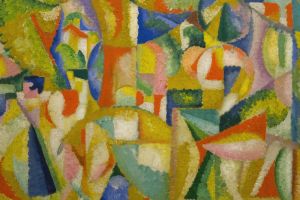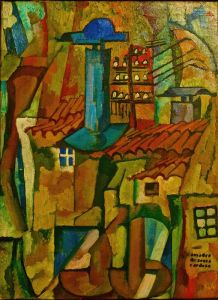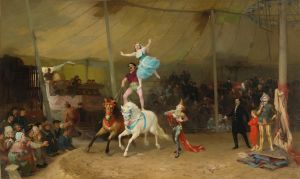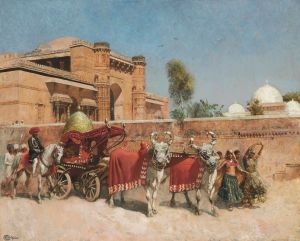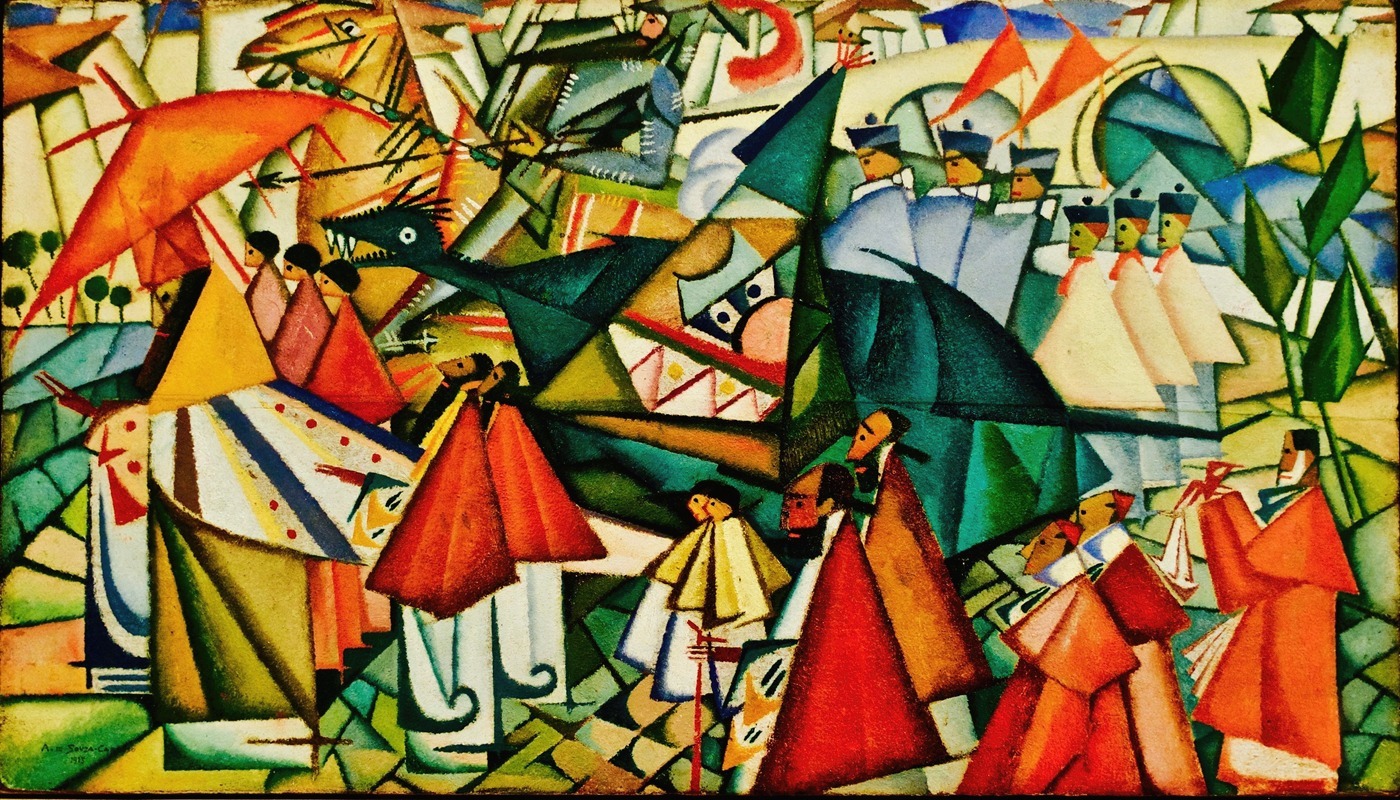
Corpus Christi Procession
A hand-painted replica of Amadeo de Souza-Cardoso’s masterpiece Corpus Christi Procession, meticulously crafted by professional artists to capture the true essence of the original. Each piece is created with museum-quality canvas and rare mineral pigments, carefully painted by experienced artists with delicate brushstrokes and rich, layered colors to perfectly recreate the texture of the original artwork. Unlike machine-printed reproductions, this hand-painted version brings the painting to life, infused with the artist’s emotions and skill in every stroke. Whether for personal collection or home decoration, it instantly elevates the artistic atmosphere of any space.
Amadeo de Souza-Cardoso's Corpus Christi Procession is a painting created by the Portuguese modernist artist during the early 20th century. Souza-Cardoso, born in 1887 in Manhufe, Portugal, is recognized as one of the most innovative and experimental artists of his time, contributing significantly to the development of modern art in Portugal and Europe. His work often blends elements of Cubism, Futurism, and Expressionism, reflecting his exposure to avant-garde movements during his time in Paris.
Corpus Christi Procession is believed to depict a traditional religious procession associated with the Catholic feast of Corpus Christi, a celebration of the Eucharist. Such processions were common in Portugal and other Catholic countries, often involving elaborate ceremonies, music, and community participation. The painting captures the essence of this cultural and religious event, though it is rendered in Souza-Cardoso's distinctive modernist style, which departs from conventional representational techniques.
The artwork is characterized by dynamic compositions, bold colors, and fragmented forms, showcasing Souza-Cardoso's interest in abstraction and his ability to reinterpret traditional themes through a modern lens. The painting reflects his fascination with movement and rhythm, elements that are central to many of his works. While the exact date of the painting is not definitively documented, it likely belongs to the period when Souza-Cardoso was actively engaging with the European avant-garde, particularly between 1910 and 1917.
Amadeo de Souza-Cardoso's career was tragically cut short when he died of the Spanish flu in 1918 at the age of 30. Despite his relatively short life, he left behind a diverse and influential body of work that continues to be celebrated for its originality and boldness. His contributions to modern art have gained increasing recognition in recent decades, both in Portugal and internationally.
The specific details regarding the current location or ownership of Corpus Christi Procession are not widely documented. However, many of Souza-Cardoso's works are housed in Portuguese museums, such as the Amadeo de Souza-Cardoso Museum in Amarante, which is dedicated to preserving and showcasing his artistic legacy.
This painting exemplifies Souza-Cardoso's ability to merge traditional Portuguese themes with the radical artistic innovations of his time, making him a pivotal figure in the history of modern art.






